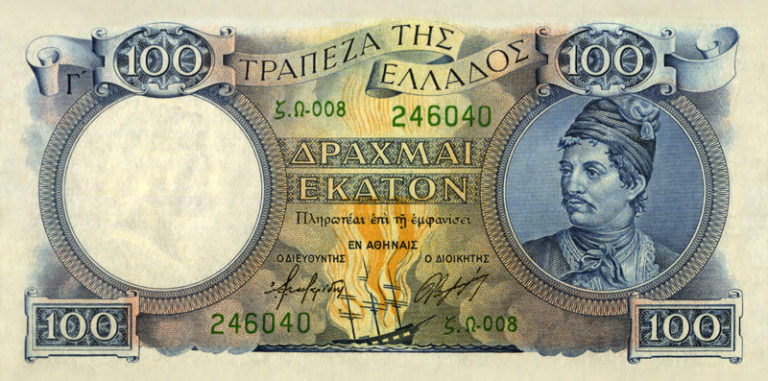Whenever we think about hyperinflation, our mind immediately goes to Germany’s Weimar Republic in the 1920s when people would carry their money in wheel barrels to buy an egg at a shop. But believe it or not, Greece has issued a banknote worth 100 billion drachmas, which in fact bore the signature of the governor of the bank of Greece Xenophontas Zolotas.
On this day in 1944, the largest Greek banknote in the denomination was issued. Greece was in economic collapse, during World War II and hyperinflation had devastated a society already reeling from the brutal Nazi occupation. The drachma had depreciated, reached its peak, and in this context, 100 billion banknotes were printed.
Based on the gold pound sterling, its real value today would not exceed… 10 euro cents!
The billion-dollar bill was withdrawn from the market a few days later. After World War II and the German occupation of Greece, two reforms were made in the Greek currency, so that the country would have a stable currency.
also read
Greek model Sofia Harmanda and Hollywood star Gerard Buttler break up
Greek shipping ‘giant’ Tsakos to invest 500 mln euros in Greece in solar park project
The first reform took place in November 1944 and the exchange rate of the devalued drachma was set at 50,000,000,000 old drachmas for every 1 new drachma.
The second reform took place a decade later, in 1954, when the drachma was replaced again with a newer one, at a rate of 1,000 drachmas to 1 new one.
The largest denomination banknote ever officially issued for circulation was in 1946 by the Hungarian National Bank for the amount of 100 quintillion pengő.
Ask me anything
Explore related questions





